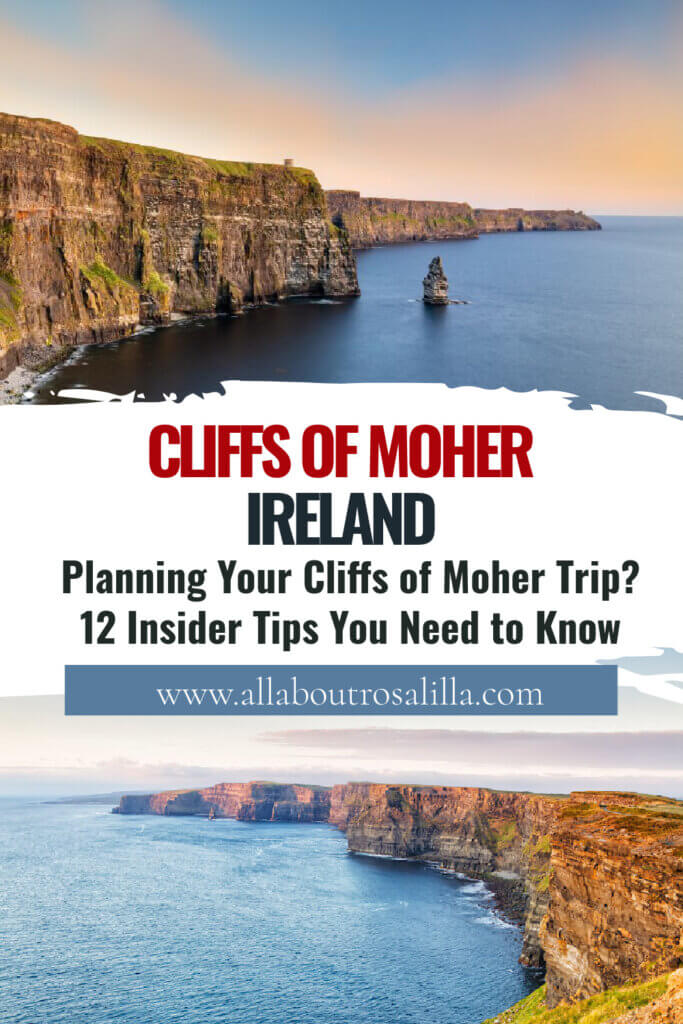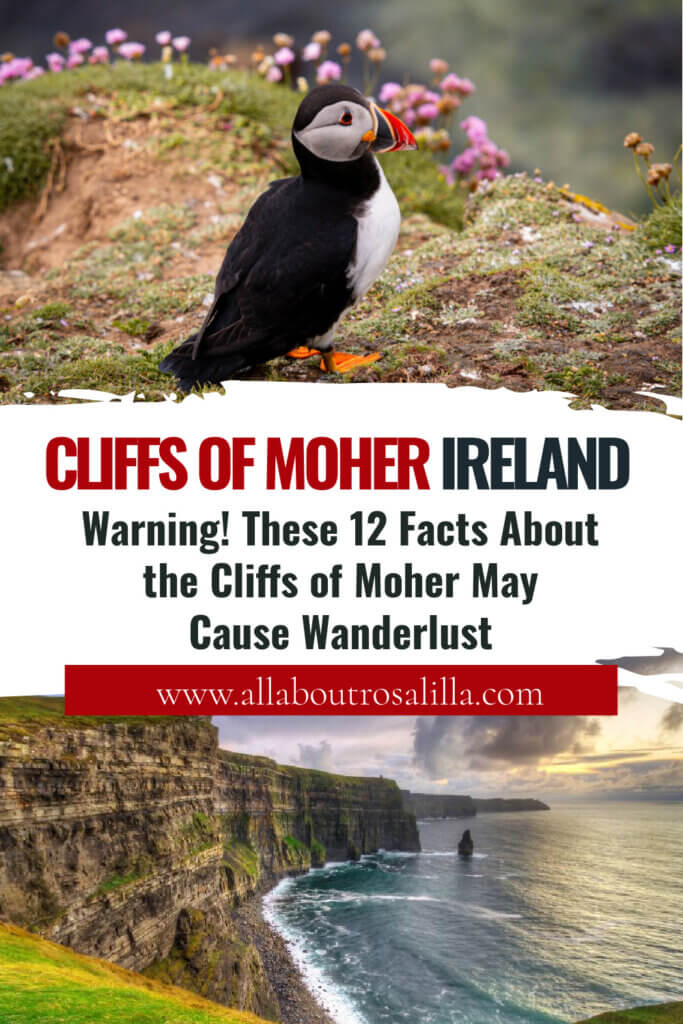
Let us introduce you to the enchanting world of the Cliffs of Moher, Ireland’s famous cliffs, where nature’s breathtaking marvels meet tales of ancient legends and extraordinary wildlife. We will unveil the hidden secrets and lesser-known facts about the iconic landmarks of the Cliffs of Moher. From the geological wonders that defy the test of time to the vibrant array of colours that adorn their surfaces and the elusive puffins that call these cliffs home, we want to show you the fascinating stories and eclectic beauty of Ireland’s most iconic cliffs. Here are twelve surprising facts that will forever change the way you perceive Ireland’s most famous cliffs.
A highlight of most Ireland tours and without question the most visited natural wonder in the country, the Cliffs of Moher are so impressive. There are so many fascinating things about their origins and surroundings, and we can’t wait to share twelve interesting facts about the Cliffs of Moher with you.
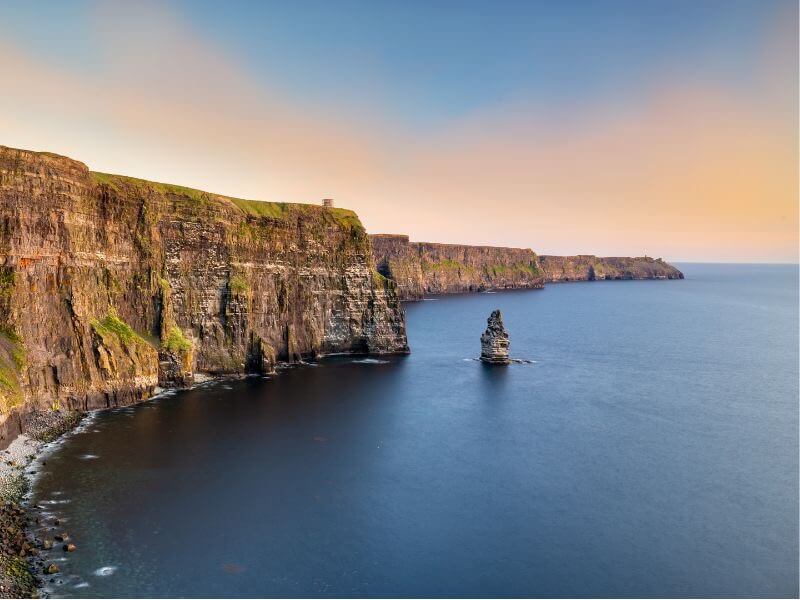
Join the Cliffs of Moher small group tour. Explore the Cliffs of Moher, the Wild Atlantic Way, and Bunratty Castle on a day tour from Dublin. Travel in custom-built vans, marvel at the majestic view of the Cliffs, and explore the historic Bunratty Castle.
Check out our guide on visiting the Kilkee Cliffs in County Clare.
Cliffs of Moher – Geological Marvels That Stand the Test of Time
One of the most remarkable aspects of the Cliffs of Moher lies in their sheer geological splendour, which has withstood the relentless forces of nature for countless centuries. These majestic formations stand as living testaments to the enduring power of the Earth, shaping the dramatic landscapes that have captivated visitors throughout the ages. From the towering heights that seem to touch the sky to the rugged edges that bear the scars of time, the Cliffs of Moher offer a fascinating window into the geological history of this enchanting land.
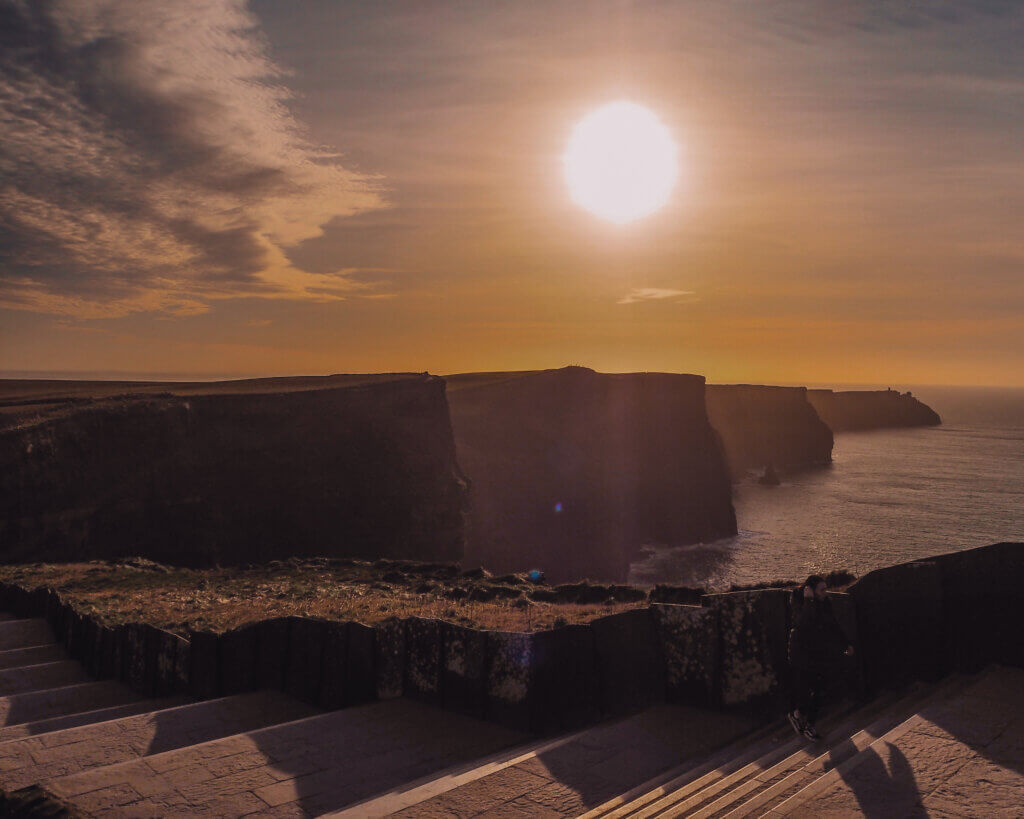
Carved by the relentless pounding of the mighty Atlantic Ocean over millennia, these cliffs have undergone a remarkable transformation. Layers upon layers of sediment, rocks, and fossils tell the story of the Earth’s ever-changing landscapes, creating a geological tapestry that seems to go on forever. The cliffs’ stratigraphy, composed of various sedimentary rock formations, showcases the intricate processes of deposition and erosion that have shaped these colossal formations over millions of years.
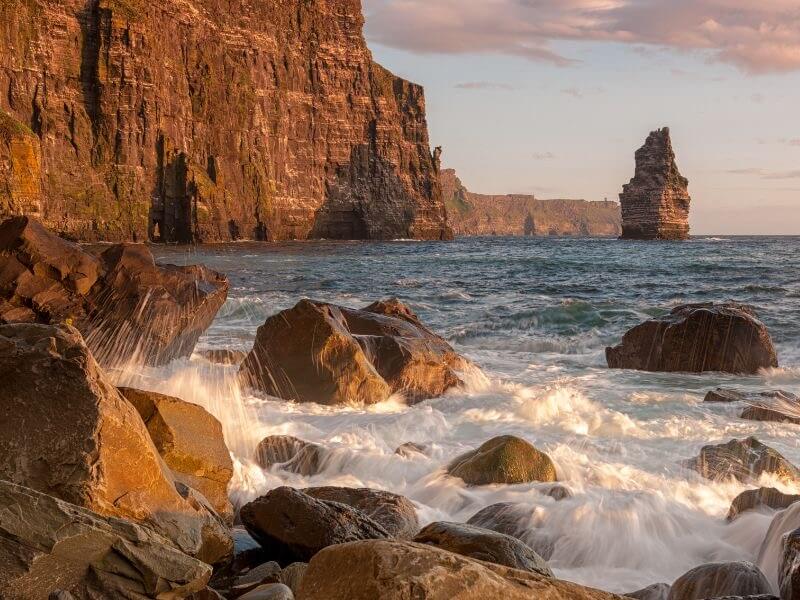
Within these ancient rock layers, you will find incredible geological treasures. The Cliffs of Moher reveal an array of distinctive rock types, including shale, siltstone, and sandstone, each with its own unique texture and colour. These diverse formations are not only incredible to look at, but they also provide valuable insights into the geological forces that shaped them. The exposed surfaces are like an open book, offering scientists and geology enthusiasts a glimpse into the Earth’s history, with each striation and crevice telling a tale of geological processes and ancient environments.
These famous Irish cliffs’ ability to endure the ceaseless onslaught of wind, rain, and wave action is a testament to their resilience. Over time, the relentless erosion has sculpted breathtaking features such as sea arches, sea stacks, and blowholes, transforming the cliffs into a dynamic display of nature’s artistic prowess. While erosion may seem like a destructive force, it is through this process that the cliffs have gained their iconic beauty, demonstrating the intricate dance between creation and destruction that defines our planet’s geological wonders.

As you make your way to the edge of these towering cliffs, you can’t help but marvel at the intricate network of fractures and fissures that crisscross the rocky faces. Known as jointing, this natural phenomenon occurs when stress causes rocks to crack and fracture, forming a mesmerizing pattern of geometrical shapes. These fractures not only add to the cliffs’ aesthetic appeal but also serve as crucial pathways for water, shaping the erosion patterns and contributing to the ever-changing nature of these geological marvels.
The Cliffs of Moher are a Kaleidoscope of Colour
The mighty cliffs that span the Atlantic coastline are not merely static structures frozen in time. Instead, they are living canvases of ever-changing colours, captivating us with their dynamic beauty. As the sun casts its golden rays upon them, the cliffs come alive, revealing a myriad of hues that dance across the rugged surface. From shades of ochre and amber to deep sienna and burnt umber, the cliffs transform into a breathtaking palette that shifts with the passing clouds and changing light. This kaleidoscope of colours paints a picture of the cliffs’ constant interaction with the elements.
The ever-changing colours of these cliffs are a testament to the rich diversity of their geological composition. The varying mineral content and the presence of different organic matter create a symphony of colours that captivate all who lay eyes upon them. These cliffs are a masterpiece of nature’s artistry, showcasing the harmonious blend of earthy tones that have been crafted over millions of years.

As you stand on the edge of the Atlantic coastline, you can feel the power of the ocean’s relentless waves crashing against the rocks, the wind whispering tales of ancient legends, and the salt-laden air filling your lungs. These famous cliffs in Ireland are not just a destination but an experience that immerses us in the raw beauty and untamed spirit of Ireland’s natural wonders. They really need to be experienced first-hand.
The Cliffs of Moher are the Site of Many Legends
Since the Cliffs of Moher have long been regarded as one of Ireland’s most famous landmarks, it is not surprising that an array of folklore legends have been created around them! One of the most interesting Cliffs of Moher facts is the tragic and well-known tale of the Hag’s Head.
The unique rock formation, visible when viewing the cliffs from the north, is said by the locals to represent an elderly hag because of the rocks that resemble the side profile of a human head. The profile is said to be that of a witch who pursued the mythological warrior-hero Cú Chulainn, according to Irish folklore.

During one of his voyages, Cú Chulainn met a witch (or hag) named Mal. She fell in love with him right away, but her feelings were not reciprocated. He fled from her out of fear of her powerful magical powers. Still, she chased after him, following him all over Ireland.
After pursuing Cú Chulainn to the brink of the Cliffs of Moher, Mal thought there was nowhere left for him to flee. He sprang powerfully onto the sea stacks, but he had to make another dangerous jump back to the cliff edge when he saw she was coming after him.
Mal tried to follow him again, but she wasn’t as fortunate. She attempted to jump back but missed the cliffs and plummeted into the rocks below, leaving her blood stains in the bay (which is now known as Milltown Malbay, said to be named after her). A few days later, her head washed up at what is now known as Hag’s Head, leaving a permanent imprint of her face on the rocks. Some people say you may still hear her agonized moans in the surrounding area to this day.
As you stand upon the cliffs, overlooking this unique feature, you can almost imagine the hag’s watchful gaze casting over the land and sea, forever guarding this natural wonder.

Another mythological figure associated with the cliffs is the Morrigan, a goddess of battle and sovereignty in Irish mythology. Often depicted as a crow or raven, the Morrigan is said to have perched on the cliffs, watching over the land and its people. Her presence added an element of mystery and enchantment to the already-inspiring cliffs.
The Cliffs of Moher are the 2nd Most Popular Destination in Ireland
With 1,580,000 visitors a year, the Cliffs of Moher rank second among Ireland’s most visited tourist attractions. Fáilte Ireland publishes an annual list of top visitor attractions to give attractions insight into how they are performing, and each year the Cliffs of Moher come out at number 2. There is stiff competition, though, from The Guinness Storehouse, The Giant’s Causeway, Dublin Zoo, and The Book of Kells.
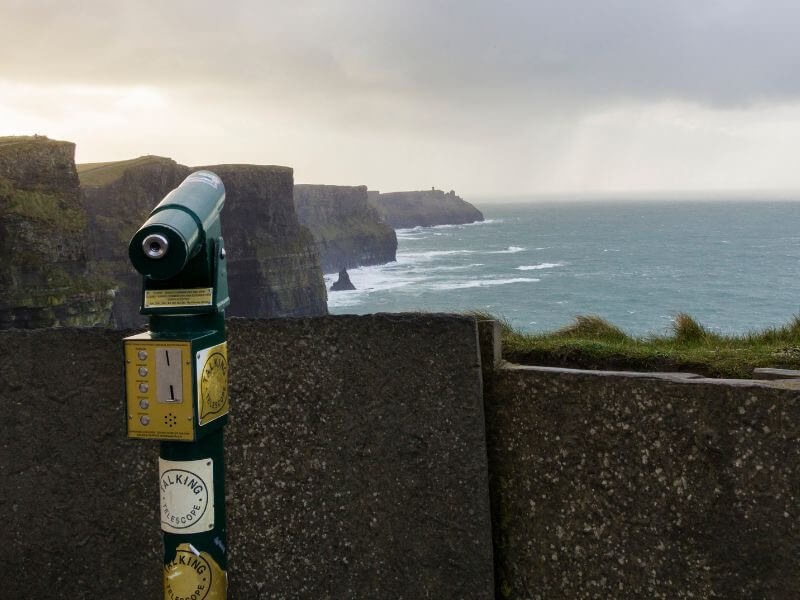
Home to Enigmatic Puffins and Other Fascinating Birds
The Cliffs of Moher provide a sanctuary for a diverse array of wildlife. Nestled along the rugged coastline, these cliffs are not just towering limestone formations that astound us with their grandeur; they are also a bustling habitat for countless sea birds.
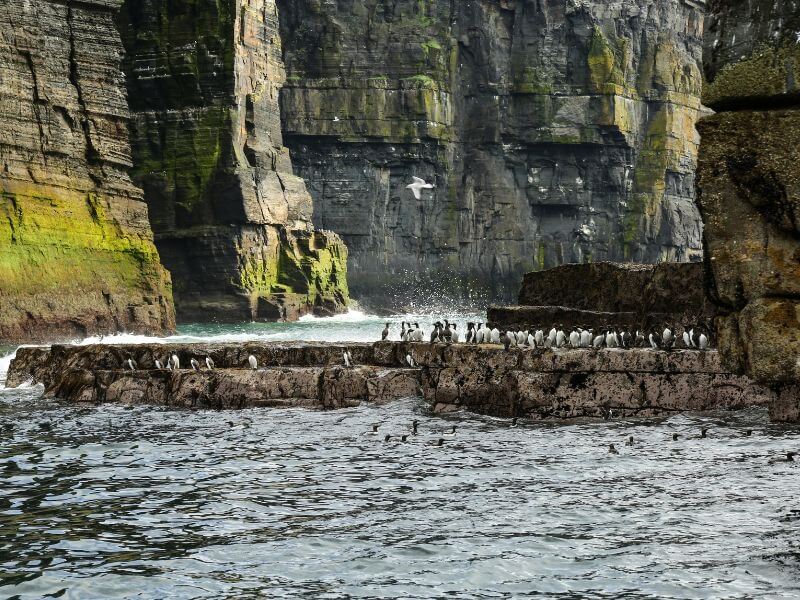
One of the most captivating inhabitants of the Cliffs of Moher is the puffin. With their distinctively colourful beaks and stocky bodies, these enigmatic birds are a delight to behold. They nest in burrows along the cliffs, creating a lively colony that adds a touch of charm to the rugged landscape. If you’re lucky enough to witness their comical antics, you’ll see them skillfully diving into the water in search of small fish, their wings flapping with grace.

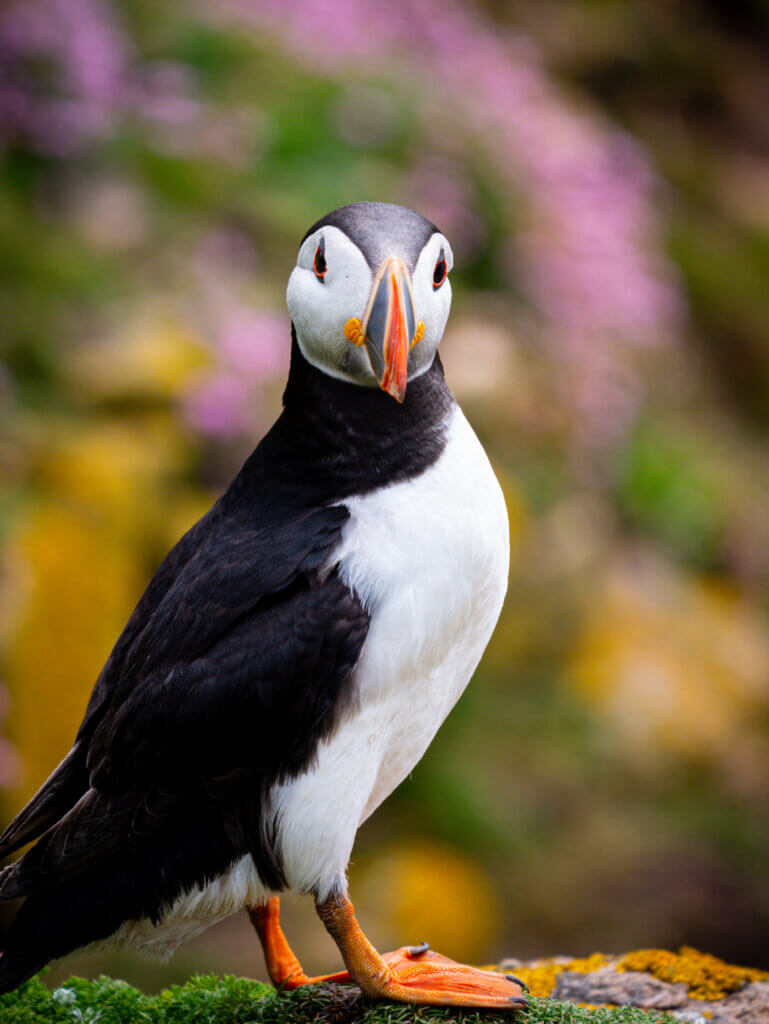
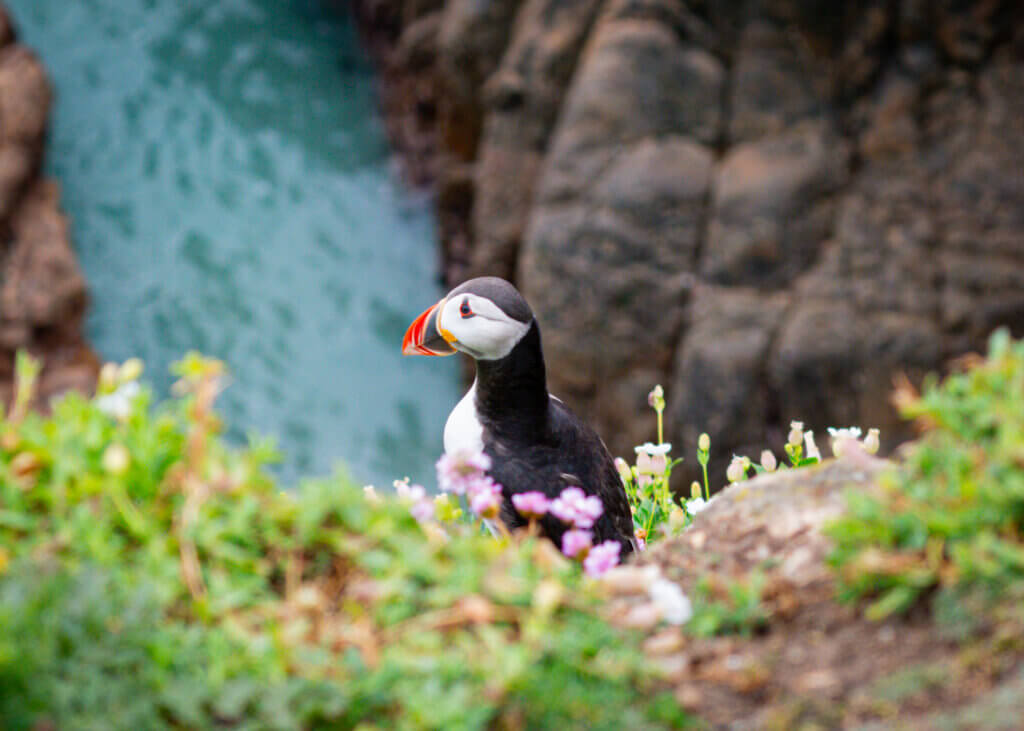
Puffins are not the only avian stars of the cliffs, though. The cliffs are also home to other fascinating bird species, such as guillemots, razorbills, and fulmars. These majestic creatures gracefully soar through the air, their calls echoing against the towering cliffs.
From the South Platform, you’re perfectly placed to see the puffin colony that makes its home on Goat Island. You may also see many other seabirds on the sea stack below O’Brien’s Tower.
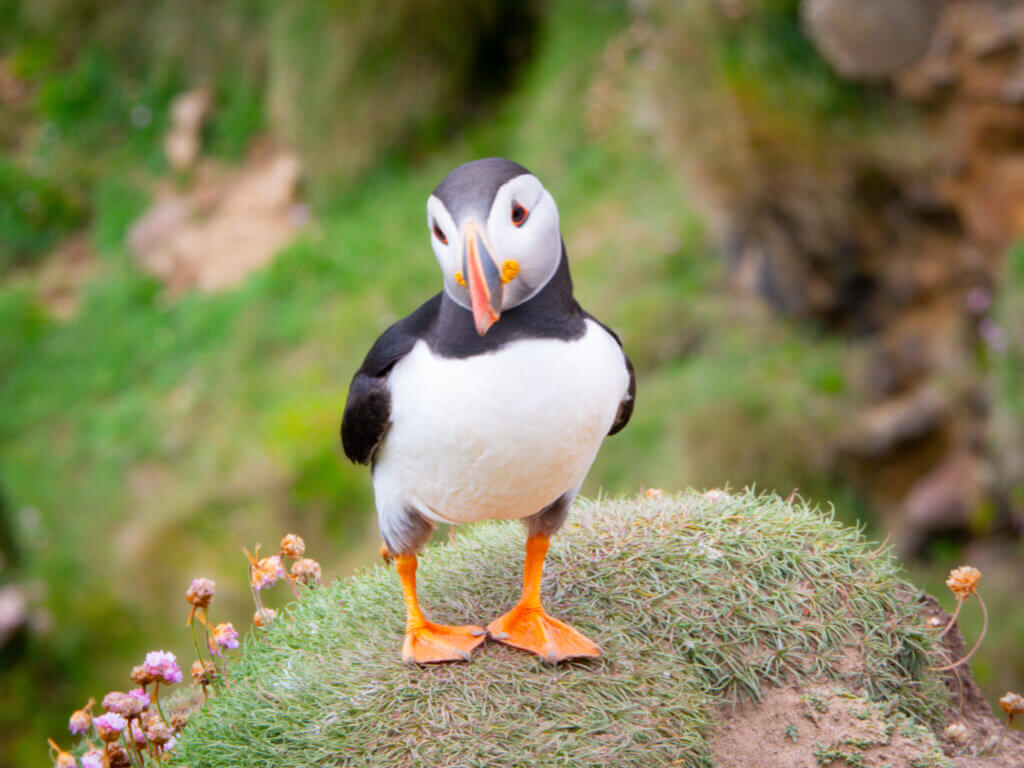
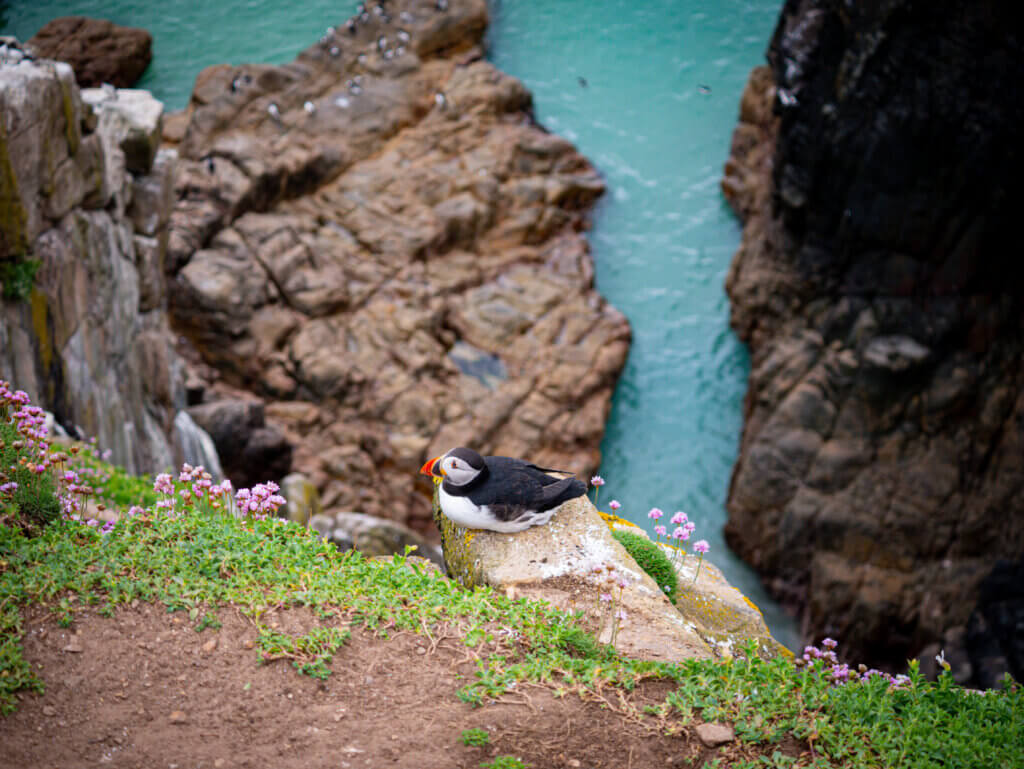
Cliffs of Moher is a breeding site for over 30,000 seabirds and was even classified as a refuge for fauna in 1988! Even if you do not know anything about birds, this is the very best spot in Ireland to do some bird-watching. Keep an eye out for Guillemots and Razorbills, Peregrine Falcons and Kittiwakes, or the famous Atlantic Puffins.
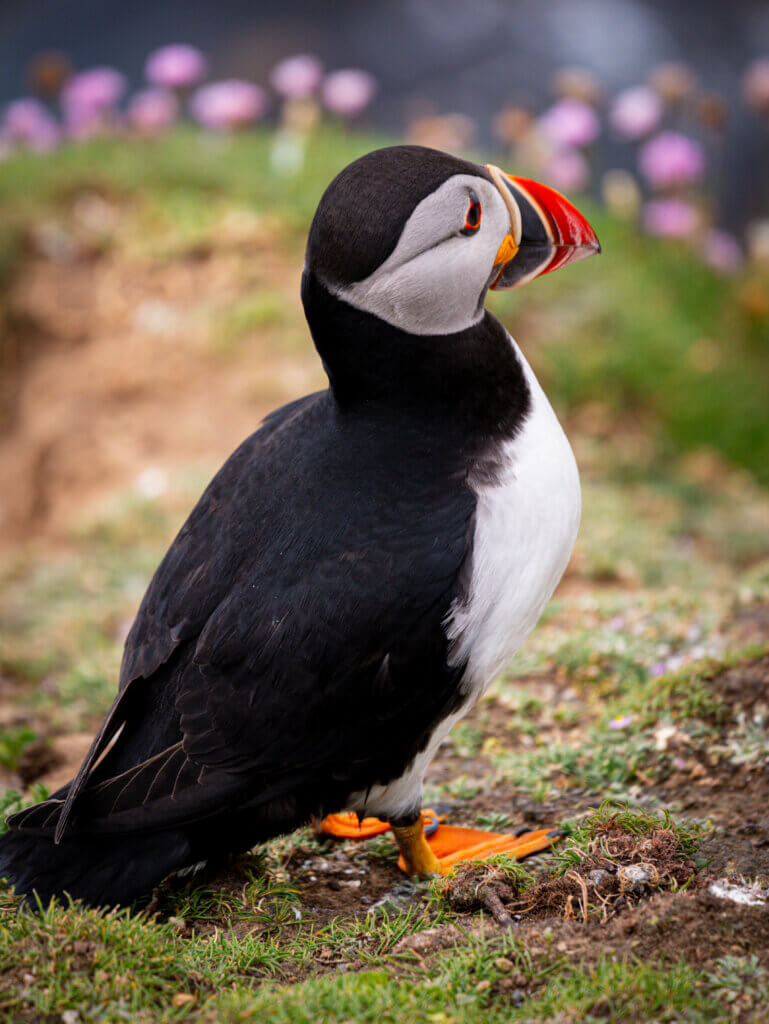
The Cliffs of Moher’s unique location and geological features create an ideal environment for these birds to thrive. The cliffs provide nesting sites that are inaccessible to predators, ensuring the safety of the birds and their young. The nutrient-rich waters below also offer a bountiful food source, attracting a diverse array of prey for the birds to feast on. This symbiotic relationship between the cliffs and the birds has resulted in the creation of a vibrant ecosystem that mesmerizes visitors from around the world.

Watching the birds soar overhead adds another layer of enchantment to an already spellbinding experience. But beyond the allure of the puffins and other avian residents, what else lies beneath the surface of these awe-inspiring cliffs? Let’s delve into the mysterious origins of the cliffs’ names and uncover the stories that have been etched into the very fabric of this remarkable natural wonder.
The Mysterious Origins of the Cliffs’ Names
The names of the Cliffs of Moher carry a history as intriguing as the cliffs themselves. One theory suggests that “Moher” comes from the Irish word “Mothar,” meaning “a ruin” or “broken fort.” The Cliffs take their name from a ruined promontory fort ‘Mothar’ – which was demolished during the Napoleonic Wars in the early 1800s to make room for a signal tower at Hag’s Head. This name aptly describes the rugged and towering cliffs that stand proudly along the western coast of Ireland. Another legend connects the name to a fort called “Mothar Dun,” believed to have once stood atop the cliffs but now lost to time.
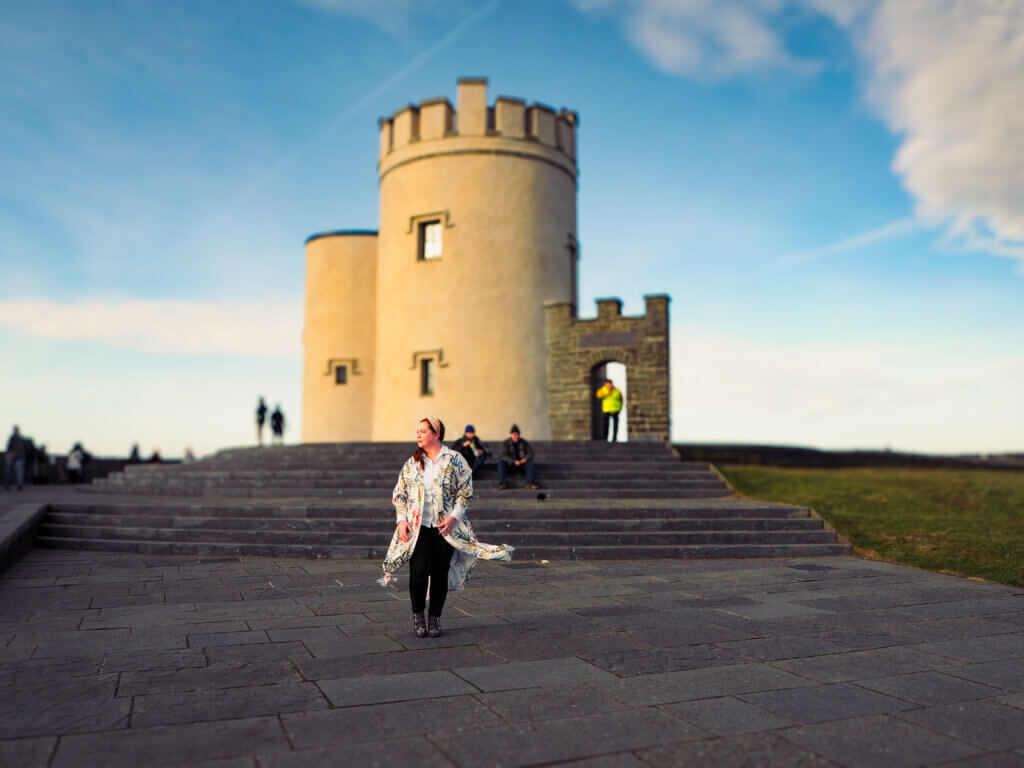
There are even tales of Ireland’s very own Atlantis. According to local legend, a sunken city now rests below the waves that pound against the cliffs. When you visit, you may notice an area of disturbed water that is thought to be its resting place if you look south towards Spanish Point.
Once perched above the cliffs, the city of Kilstiffen (also known as Cill Stuifin) collapsed when its chieftain misplaced the golden key to the castle doors during a fight. Until the key is located and recovered, the city will not rise. Some claimed to have seen the golden-roofed city shining below the surface of the water over the years. Others say the city rises above the waves every seven years, but that those who catch a glimpse of it will die before it rises again.
Each possibility adds an air of mystery, allowing our imaginations to wander and envision the ancient past that shaped this breathtaking landscape.
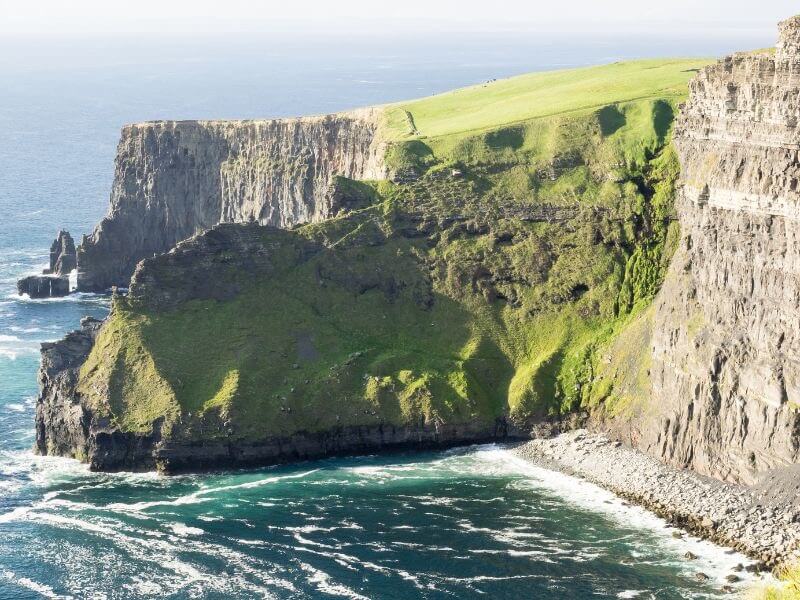
Another fascinating name associated with the Cliffs of Moher is “Branaunmore,” which translates to “big gullet” or “great-breasted.” This name refers to a large sea stack situated near the cliffs. The sea stack, standing as a solitary pillar amidst the crashing waves, is an enduring symbol of the cliffs’ dramatic beauty. The name Branaunmore not only acknowledges the physical characteristics of the sea stack but also adds a touch of poetry to the landscape, evoking images of a majestic creature rising from the sea.
These stories and names are just a glimpse into the rich tapestry of history and mythology that surrounds the Cliffs of Moher. These tales and legends continue to captivate visitors. As you stand on the edge of the Cliffs of Moher, gazing out at the vast expanse of the Atlantic Ocean, it’s hard not to imagine the echoes of ancient Irish legends carried on the wind. These cliffs, with their towering heights and rugged beauty, have long been intertwined with tales of mythical creatures and heroic deeds.
If you are spending time in Clare, check out our County Clare Ireland Travel Guide with a feature on Kilkee Cliffs or if you plan on checking out Galway then we highly recommend that you read our guide on things to do in Connemara.
The Cliffs of Moher are often used as a backdrop in movies
In addition to the ancient legends, the Cliffs of Moher have served as the backdrop for countless tales of adventure and romance. Writers and poets have drawn inspiration from the cliffs’ rugged beauty, using them as a setting for their stories. From tales of star-crossed lovers to daring escapades, the cliffs have become a muse for creative minds throughout the centuries.
But these Irish cliffs have also been made famous on screen. The rugged cliffs, crashing waves, and panoramic vistas serve as a powerful canvas for storytelling, allowing filmmakers to create evocative scenes that transport viewers to a world of wonder and emotion. Some of the most famous movies that have been filmed here include Harry Potter and the Half-Blood Prince, The Princess Bride, Leap Year, and Ryan’s Daughter.

The Cliff of Foals
The name of another section of the Cliffs of Moher comes from a tale describing a meeting point between early Christian and Gaelic mythology. The supernatural religion known as the Tuatha Dé Danann lost some of its influence after St. Patrick converted Ireland to Catholicism.
The gods changed into horses in anger at the development of the new religion and they spent centuries hiding out in caverns close to the cliffs.
One day, seven foals appeared out of the caverns, emerging from the darkness. The foals galloped around the edge of the cliff, disoriented by the startling glare of daylight outside. Each of them plunged into the sea below and met their demise. The spot where they fell off is now known as the Cliff of Foals (or Aill Na Searrach).
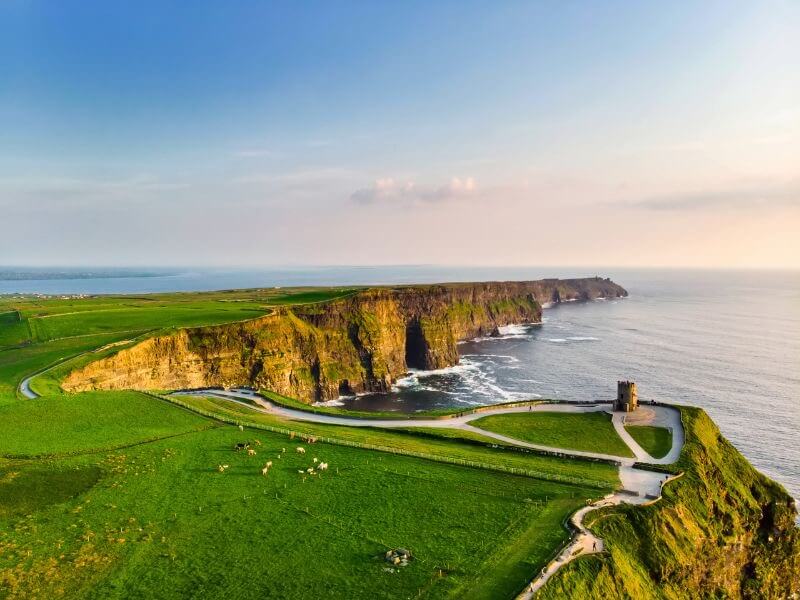
The Cliffs of Moher are an Ecological Haven for Rare Flora and Fauna
This mystical environment has become an ecological haven for rare flora and fauna. Nestled among the towering cliffs, a diverse array of plant and animal life thrives in this unique ecosystem. From delicate wildflowers to elusive seabirds, the Cliffs of Moher provide a vital sanctuary for a multitude of species.
The rugged landscape of the cliffs creates varied habitats, offering niches for both hardy and delicate plant life. In the sheltered crevices and rocky outcrops, rare and endangered species of flora can be found. One such example is the Moher bellflower, a delicate blue flower that is only found on these cliffs. Its magical beauty adds a touch of enchantment to its already stunning surroundings.
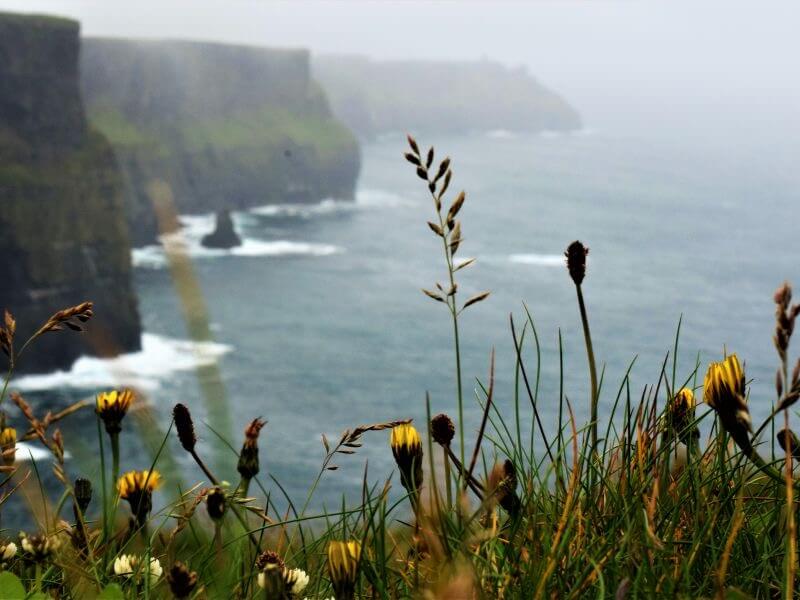
But it’s not just the cliffs themselves that contribute to this ecological haven. The surrounding coastal ecosystem also plays a crucial role in supporting the diverse array of flora and fauna found here. The mix of sea spray, wind, and saltwater creates a uniquely challenging environment that only the hardiest of species can survive in. Coastal grasslands, heathlands, and sand dunes provide additional habitats for a multitude of plant and animal life.
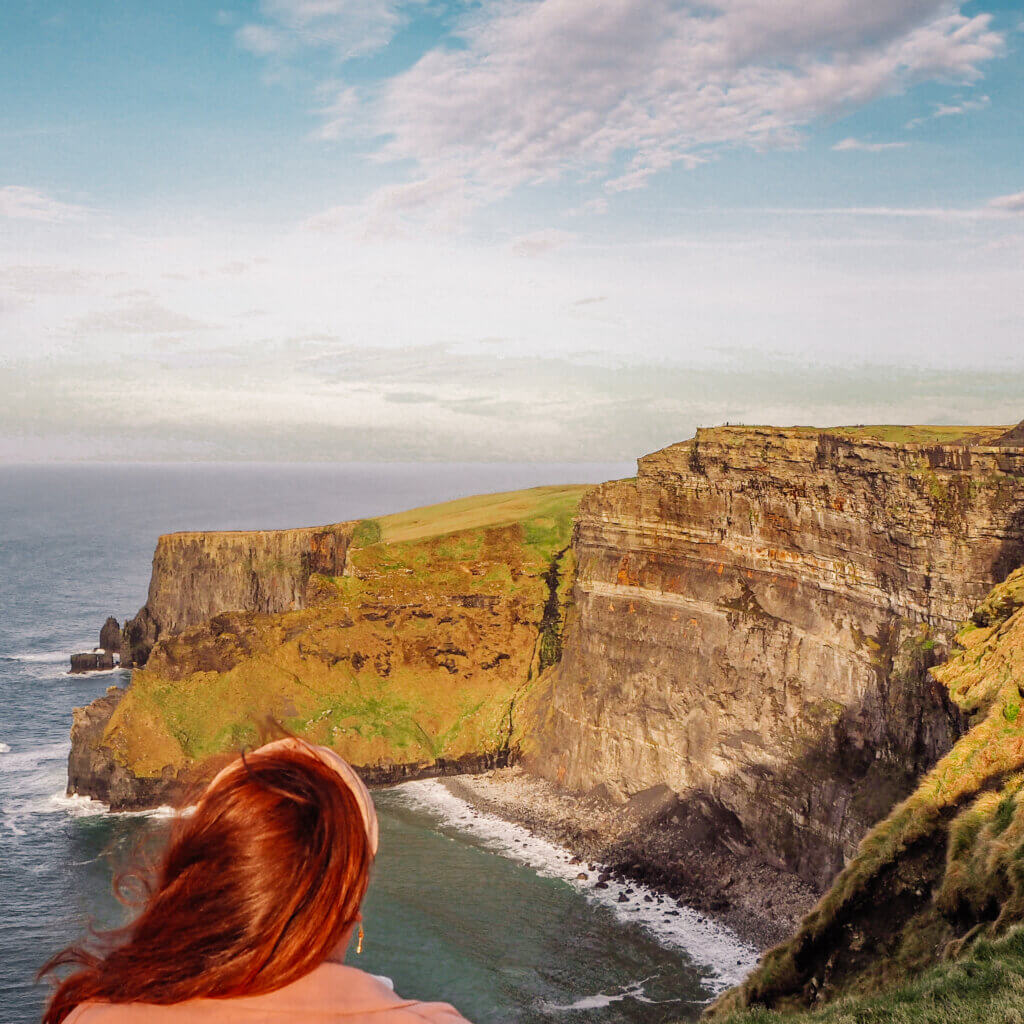
Preserving the delicate balance of this ecological haven is essential to ensuring the continued survival of these rare species. Efforts have been made to protect and conserve this fragile ecosystem, from establishing nature reserves to implementing sustainable tourism practices. By understanding and appreciating the ecological significance of the Cliffs of Moher, we can ensure that future generations will also have the opportunity to marvel at their beauty.
Climbing and Hiking Adventures at the Cliffs of Moher
The Cliffs of Moher are not only a sight to behold from afar but also offer a thrilling playground for those seeking outdoor adventure. The cliffs beckon adventurers to test their limits and push themselves to new heights on their rugged terrain.
Climbing the cliffs is not for the faint-hearted, but for those who dare take on the challenge, the rewards are unparalleled. The rewards of conquering these cliffs are not only physical; they are also deeply spiritual. The sheer vastness of the ocean stretching out before you and the feeling of being connected to nature’s raw power are incredible. Standing on the edge of the world, gazing out into the horizon, you can’t help but feel a profound sense of humility and wonder.

For hikers, the Cliffs of Moher provide a network of exhilarating trails that wind along the cliff edge, offering breathtaking views at every turn. Whether you choose the Cliff Walk or the Burren Way, you’ll find yourself immersed in the captivating beauty of Ireland’s rugged west coast.
While the cliffs present challenges and risks, it’s essential to approach these adventures with caution and respect. The weather conditions can be unpredictable, with strong winds and sudden fog rolling in from the Atlantic. Proper equipment and preparation are crucial for a safe and enjoyable experience. Make sure to seek the guidance of experienced guides or join organized tours to navigate the cliffs’ treacherous paths.

The Cliffs of Moher Have Inspired Literary Giants
The Cliffs of Moher not only captivate adventurers with their rugged beauty and imposing heights, but they have also long been a source of inspiration for some of the world’s most esteemed literary figures. These towering cliffs have a way of stirring the imagination and awakening creativity in those who experience them.
Writers, poets, and artists have been drawn to the Cliffs of Moher for centuries, seeking solace in their dramatic vistas and finding comfort in the power of nature. The impressive backdrop of the Atlantic Ocean crashing against the cliffs has served as a muse for countless tales, poems, and paintings.
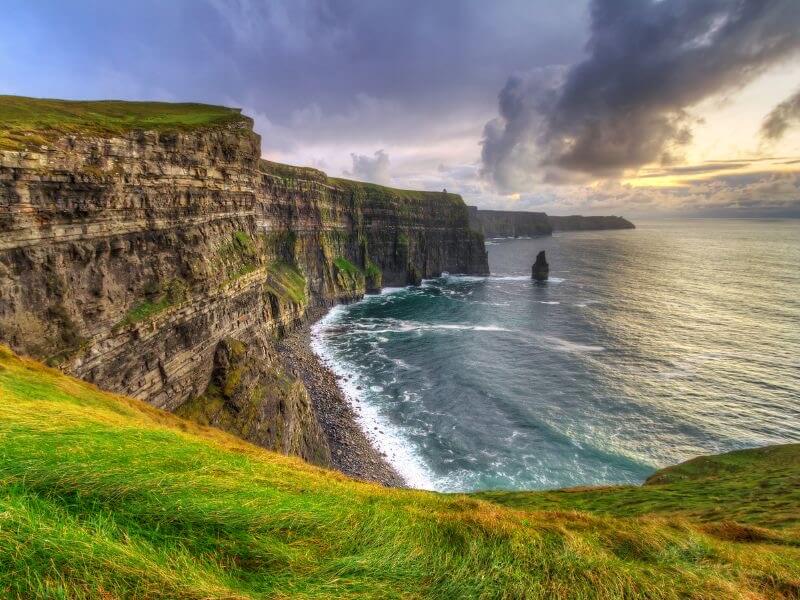
In the 19th century, literary giant William Butler Yeats found himself spellbound by the grandeur of the Cliffs of Moher. These majestic cliffs seemed to represent the indomitable spirit of Ireland itself, and Yeats’s enchantment with them can be seen in his renowned works. His evocative words captured the beauty of the cliffs and conveyed the deep sense of connection between the Irish people and their land.

Centuries earlier, Jonathan Swift, the author of “Gulliver’s Travels,” also drew inspiration from the Cliffs of Moher. While Swift’s writing often delved into fantastical realms, it is said that the sheer magnificence of the cliffs helped shape his vivid imagination. The majestic views and the sense of wonder that the cliffs instilled in him found their way into his stories, creating a sense of escapism and adventure that continues to captivate readers today.
Even modern authors, such as Seamus Heaney and Edna O’Brien, have found inspiration in the Cliffs of Moher. Heaney, one of Ireland’s most celebrated poets, used the cliffs as a metaphor for the struggles and resilience of the Irish people in his powerful verse. O’Brien, known for her poignant storytelling, drew upon the cliffs’ transcendent beauty to evoke a sense of longing and nostalgia in her novels.

The cliffs’ ability to ignite the imagination and evoke a profound emotional response has made them a cornerstone of Irish literature and art. These literary giants, who themselves had the privilege of witnessing the cliffs’ majesty firsthand, have paved the way for future generations of writers to find solace and inspiration in the unyielding strength and breathtaking views of the Cliffs of Moher.
Sustainability is a Top Priority at The Cliffs of Moher
Sustainable conservation efforts for the preservation of the Cliffs of Moher have become a top priority for the Irish government and various environmental organizations. Understanding the immense cultural and touristic significance of these cliffs, initiatives have been put in place to strike a delicate balance between preserving their natural beauty and allowing visitors to experience their wonder.
One of the key strategies employed in conservation efforts is the implementation of controlled visitor access. While the Cliffs of Moher welcome millions of visitors each year, steps have been taken to manage the number of people who can access certain areas at any given time. By limiting foot traffic and designating viewing areas, the cliffs’ fragile ecosystem can be protected from erosion and other potential damage caused by excessive human activity.
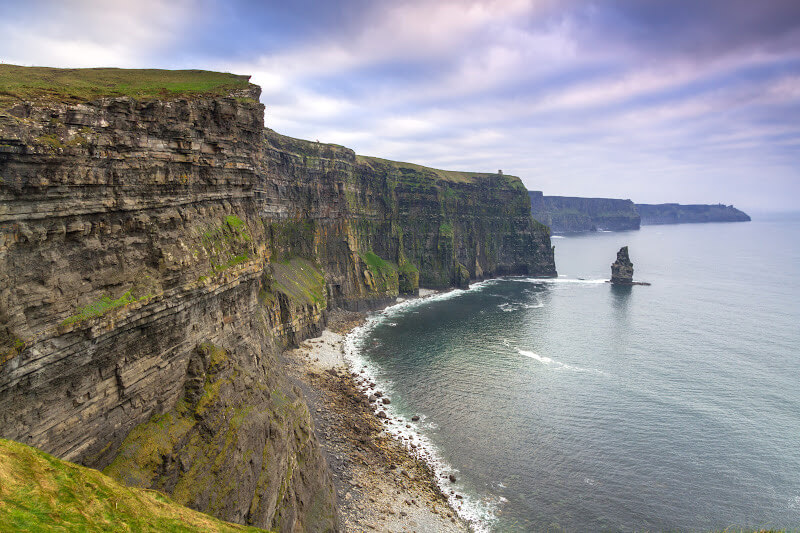
Additionally, ongoing research and monitoring programs play a crucial role in ensuring the long-term sustainability of the cliffs. Environmental scientists and experts closely monitor the cliffs’ geological stability, bird colonies, and marine life, providing valuable information to guide conservation efforts. This data-driven approach allows for a deeper understanding of the cliffs’ delicate ecosystem and helps identify potential threats and necessary interventions.
In line with the principles of sustainable tourism, the Cliffs of Moher also prioritize waste management and energy efficiency. Recycling facilities are available throughout the visitor centre, encouraging responsible waste disposal. The centre itself operates on renewable energy sources, reducing its carbon footprint and setting an example for other tourist attractions worldwide.
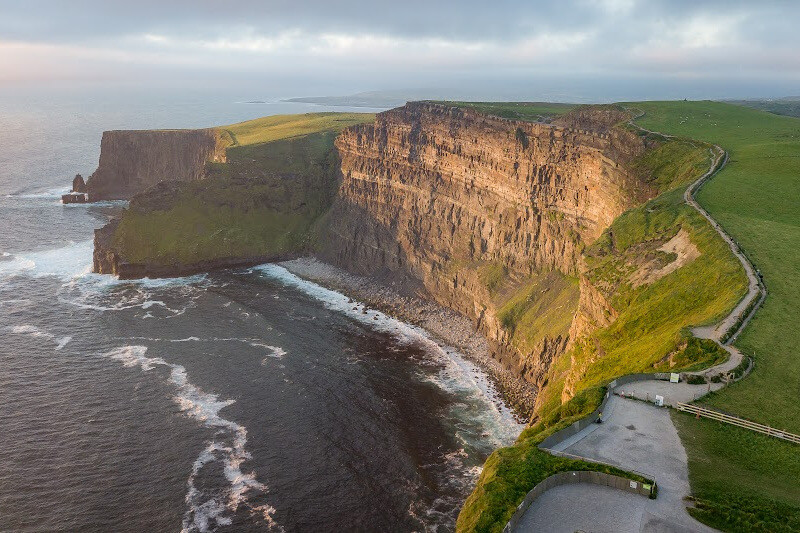
Engaging with local communities and promoting environmental education are additional pillars of the preservation efforts. The Cliffs of Moher Visitor Experience actively collaborates with nearby communities, supporting local businesses and striving to create a sense of shared responsibility for the cliffs’ conservation. Educational programs, guided tours, and informative displays offer visitors a chance to learn about the cliffs’ geological formation, wildlife, and ongoing conservation efforts, fostering a deeper appreciation for the importance of their preservation.
Intriguing, awe-inspiring, and filled with hidden wonders, Ireland’s famous cliffs have captivated visitors for centuries. From their geological marvels that defy time to the enigmatic legends that surround them, these natural wonders have an irresistible allure. Whether you’re planning a trip or seeking inspiration, the Cliffs of Moher are an experience not to be missed during a visit to Ireland.

Book Your Stay Near the Cliffs of Moher
About us
We are Nicola and Ronan Lavin experts in finding unique accommodation all over the world. Voted as the Top 6 Travel Bloggers in Ireland by Stellar Magazine and the Top 10 Travel Influencers in Ireland by readers of the Irish Independent we are dedicated to helping you find authentic and immersive travel experiences to help you plan your perfect vacation.
**Disclaimer: This post contains affiliate links, meaning that if you book through one of our links, we will receive a small commission at no extra cost to you. This helps us create the wonderful travel guides that we do.**
Are you new here? Join thousands of other happy readers and subscribe to All About RosaLilla blog via email. The good news is that by signing up via email you will get exclusive travel deals straight to your inbox. The only other place that we publish these deals is on Instagram stories, so be sure to signup to get the heads up on amazing travel deals to save you money when booking.
We also share everything about ourselves on Instagram with nothing held back, so be sure to follow along there.
If you liked this, you may also like:
Visit County Clare, Kilkee Cliffs and The Wild Atlantic Way
Spend a Weekend in Galway with Tips from a Local
25 Airbnbs in Ireland for large groups
Unique Accommodation in Northern Ireland
Downpatrick Head Ireland. A day trip from Galway
Until next time, you crazy kids!

Sharing is sexy!
